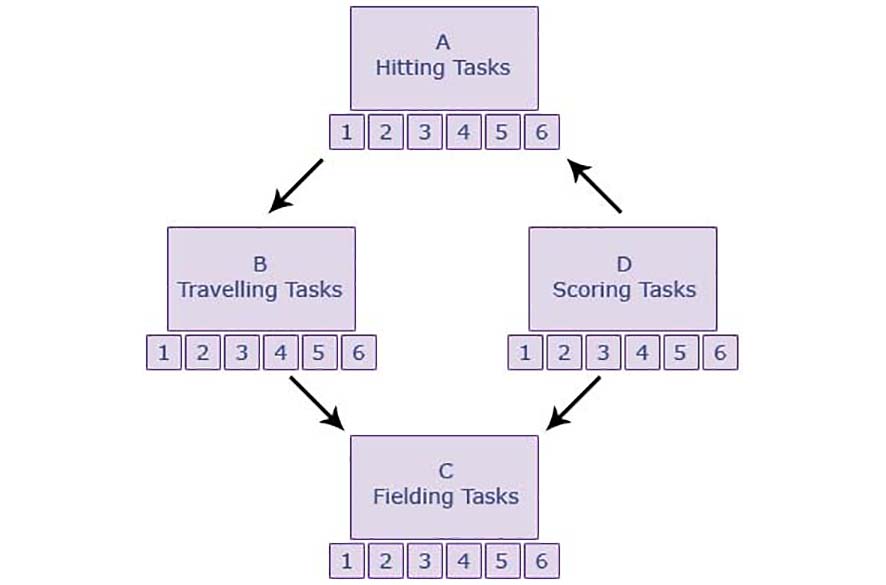Example case study
As a practical example the game of T-Ball could be used as a case study. The teacher would consider this game from a number of perspectives to account for the ‘outcomes' that they were pursuing for the individuals in the session for the National Curriculum.
T-Ball case study: hitting, running and fielding

Key points
- The teacher/coach/Sports Development Officers has this range of ideas to include pupils (A-D)
- They decide which one or which combination is appropriate (A2, B1, C4)
- They adjust them based on experience (i.e. calibration/balance between the scale of the hitting range and the ability of the fielders defence)
Initially the situation would be viewed from the total game and then viewed from the six components. Teachers should then be able to have a professional resources of ideas, and decide how best to set the game up - not just accepting the set of ideas/rules from the British Baseball Association and their support material.
If the desired outcomes pursued were not being realised, then the six components of the game would need to be addressed - not just with more ideas but also adjusted in relation to one another, i.e. a sophisticated professional approach.
Thus each of the adapted games in the Youth Sport Trust's SportSability resources demonstrate the various ways of balancing these six basic components to produce a specific game with a challenge, i.e:
However, teachers and facilitators in the field must learn the above adapting techniques to change even these specialist game formats to achieve the best outcomes for their youngsters.

T-Ball case study: hitting, running and fielding
Key points
- The teacher/coach/Sports Development Officers has this range of ideas to include pupils (A-D)
- They decide which one or which combination is appropriate (A2, B1, C4)
- They adjust them based on experience (i.e. calibration/balance between the scale of the hitting range and the ability of the fielders defence)
Initially the situation would be viewed from the total game and then viewed from the six components. Teachers should then be able to have a professional resources of ideas, and decide how best to set the game up - not just accepting the set of ideas/rules from the British Baseball Association and their support material.
If the desired outcomes pursued were not being realised, then the six components of the game would need to be addressed - not just with more ideas but also adjusted in relation to one another, i.e. a sophisticated professional approach.
Thus each of the adapted games in the Youth Sport Trust's SportSability resources demonstrate the various ways of balancing these six basic components to produce a specific game with a challenge, i.e:
However, teachers and facilitators in the field must learn the above adapting techniques to change even these specialist game formats to achieve the best outcomes for their youngsters.